Tips For Propagating Brugmansia
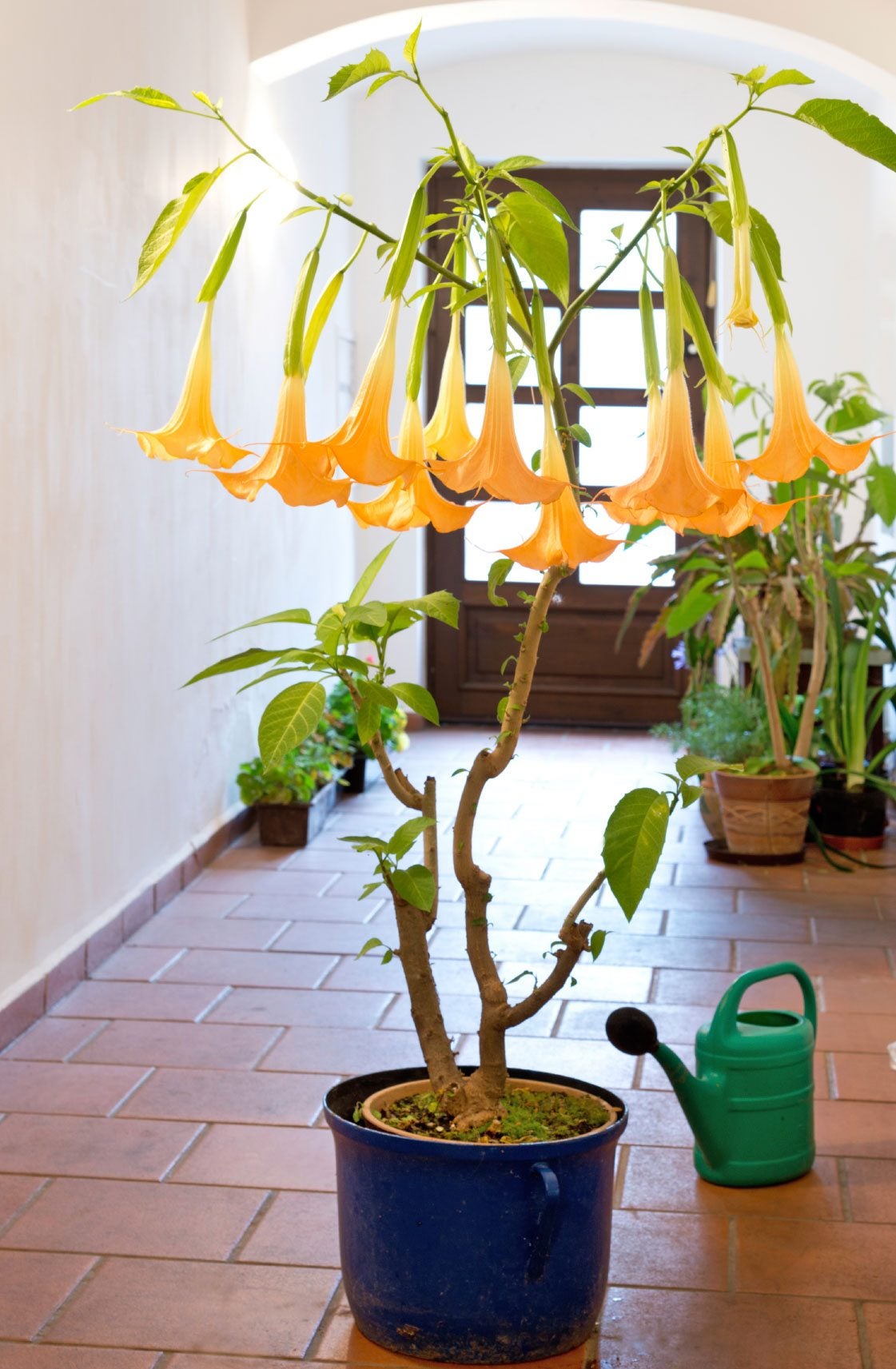

Perfect for the summer container garden, brugmansia is a fast-growing, easy-care shrub. This beautiful, flowering plant is not only easy to grow, but propagating brugmansia is easy too. There are three methods of brugmansia propagation-- by seeds, cuttings, and air layering-- so you're sure to find the method that works best for you.
Growing Brugmansia from Seeds
Brugmansia seeds are enclosed in a cork-like covering. The seeds themselves resemble small beans. When growing brugmansia from seeds, you can choose to leave this covering in place or remove it. Keep in mind, however, that taking the seed covering off will allow for faster germination and sprouting. Plant brugmansia seeds about half an inch (1 cm.) deep in a mixture of sand and peat. Water well. The seeds should germinate within two to four weeks. Once seedlings have obtained their second leaves, they can be gently lifted and repotted individually in well-draining potting soil. Place in an area with indirect light.
Rooting Brugmansia Cuttings
Rooting brugmansia cuttings is the easiest way to propagate plants. They can be rooted in soil or water using both hardwood and softwood cuttings. Select cuttings from older wood and make them at least 6 inches (15 cm.) long. When rooting brugmansia in water, remove all the bottom leaves. Change the water daily and once roots appear, move cuttings to a soil environment. If rooting in soil, place cutting about 2 inches (5 cm.) deep in well-draining potting soil. Use your finger or a stick to make this easier. Likewise, you can make a small "trench" with your finger and place the cutting inside, firming the soil around the bottom part of the brugmansia cutting. Water the cutting and place it in a semi-shaded location until well rooted, at which time you can provide additional light.
Brugmansia Propagation Using Air Layering
Air layering allows you to root brugmansia cuttings while remaining on the mother plant. Choose a branch and cut an angled notch in the bottom side. Apply rooting hormone and then place some moistened peat mix (or soil) around the wound. Lightly wrap clear plastic over this. Once significant rooting has taken place, cut the branch from the mother plant and remove the plastic. Plant this in a pot of well-draining soil and keep it watered. Move to a shady location until well established before adding more light. Brugmansia propagation is an easy and effective way to add more of these lovely plants to your garden. With three different methods to choose from, propagating brugmansia is sure to be a success.
Gardening tips, videos, info and more delivered right to your inbox!
Sign up for the Gardening Know How newsletter today and receive a free copy of our e-book "How to Grow Delicious Tomatoes".

Nikki Tilley has been gardening for nearly three decades. The former Senior Editor and Archivist of Gardening Know How, Nikki has also authored six gardening books.
-
 My Homemade Orchid Fertilizer Always Brings More Blooms – Here's The Easy Recipe That Transforms Plants
My Homemade Orchid Fertilizer Always Brings More Blooms – Here's The Easy Recipe That Transforms PlantsScientist-turned-gardener Mary Ellen Ellis shares her tried-and-tested DIY orchid fertilizer recipe, plus more ingredients to try for healthy, happy plants.
By Mary Ellen Ellis
-
 Looking For Plants To Give You The Soft And Fuzzies? Try These 5 Fuzzy Leaf Plant Options
Looking For Plants To Give You The Soft And Fuzzies? Try These 5 Fuzzy Leaf Plant OptionsLovers of texture, drama, silver foliage and tactile plants will adore these special sensory garden additions. These fuzzy leaf plant options will leave you all aglow
By Susan Albert
-
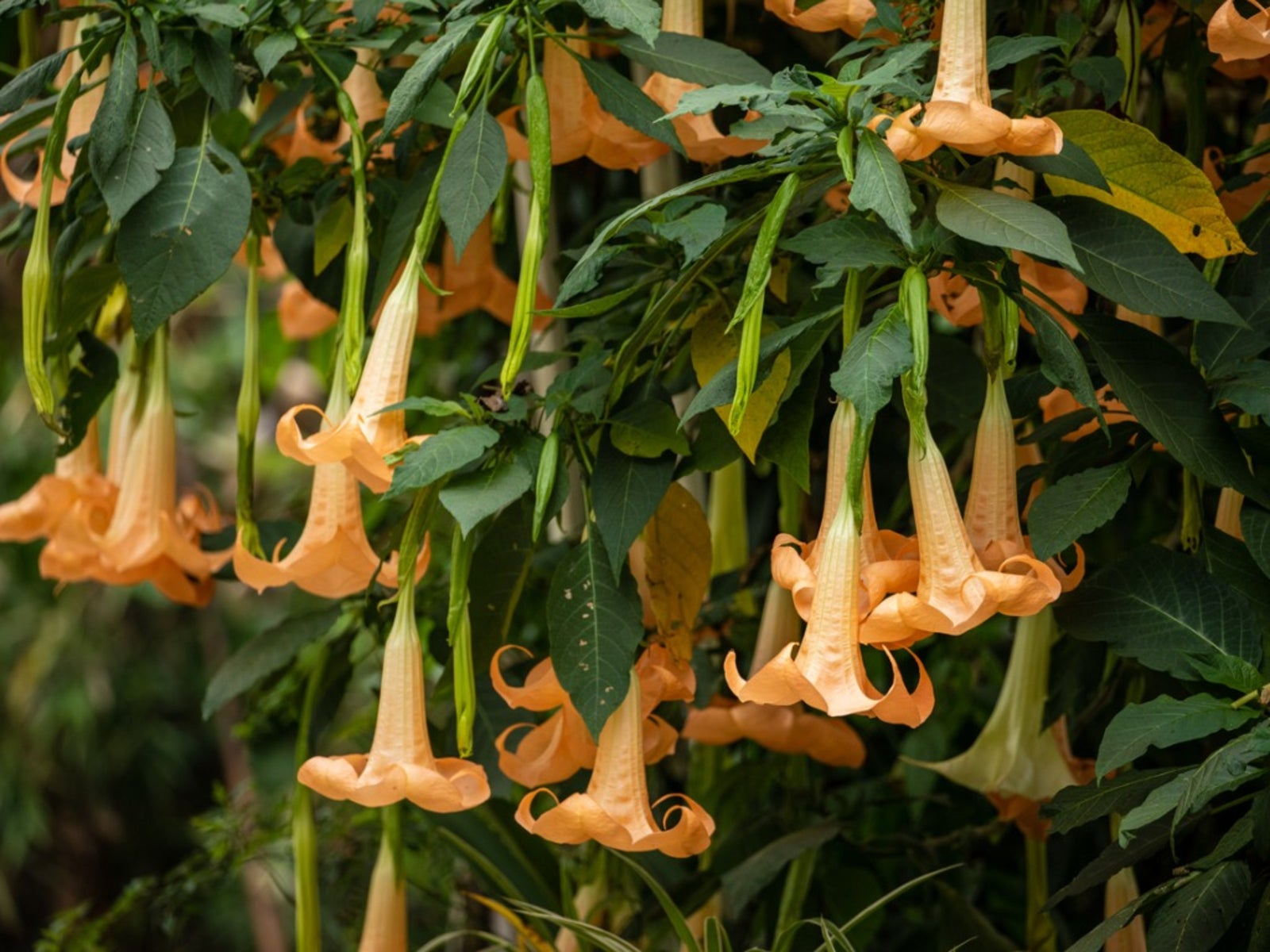 Brugmansia Cold Tolerance: How Cold Can Brugmansias Get
Brugmansia Cold Tolerance: How Cold Can Brugmansias GetHow cold can Brugmansias get and still survive? The United States Department of Agriculture sets Brugmansia cold hardiness in zones 8 to 11. Learn more about the cold tolerance of Brugmansia plants in this article.
By Bonnie L. Grant
-
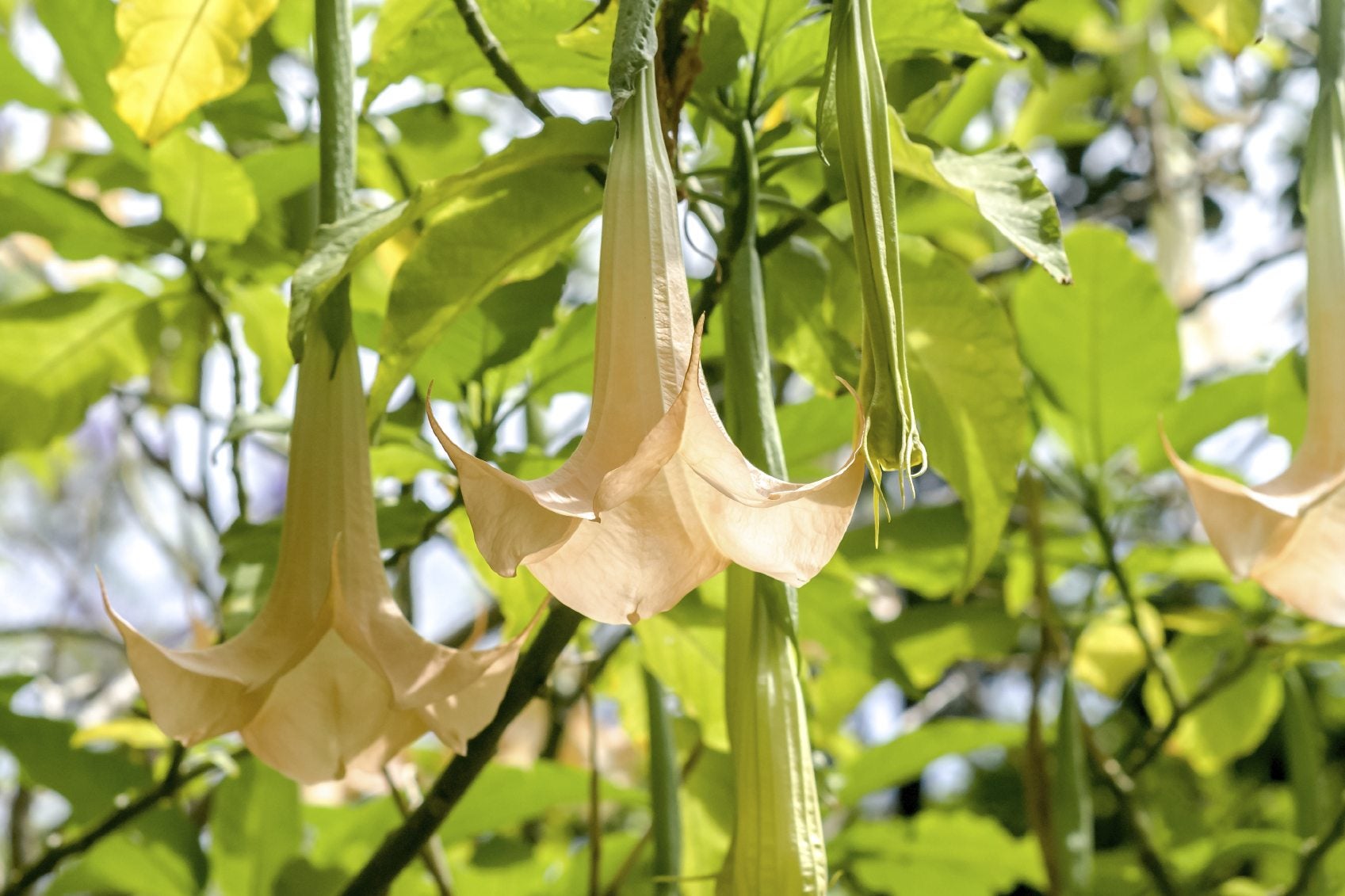 Brugmansia Plant Care: How To Care For Brugmansia In Ground Outside
Brugmansia Plant Care: How To Care For Brugmansia In Ground OutsideGrowing brugmansia in the ground works well in United States Department of Agriculture zones 9 to 12. Try a brugmansia in the garden for show-stopping color and dynamic proportions. This article will help get you started.
By Bonnie L. Grant
-
 Watering Brugmansia Plants: How Much Water Does Brugmansia Need
Watering Brugmansia Plants: How Much Water Does Brugmansia NeedBrugmansia is a distinctive plant with big leaves and huge, drooping, trumpet-shaped blooms as long as your foot. This flashy tropical plant is surprisingly easy to grow, but it helps to know exactly how to water brugmansias. Click here for more.
By Mary H. Dyer
-
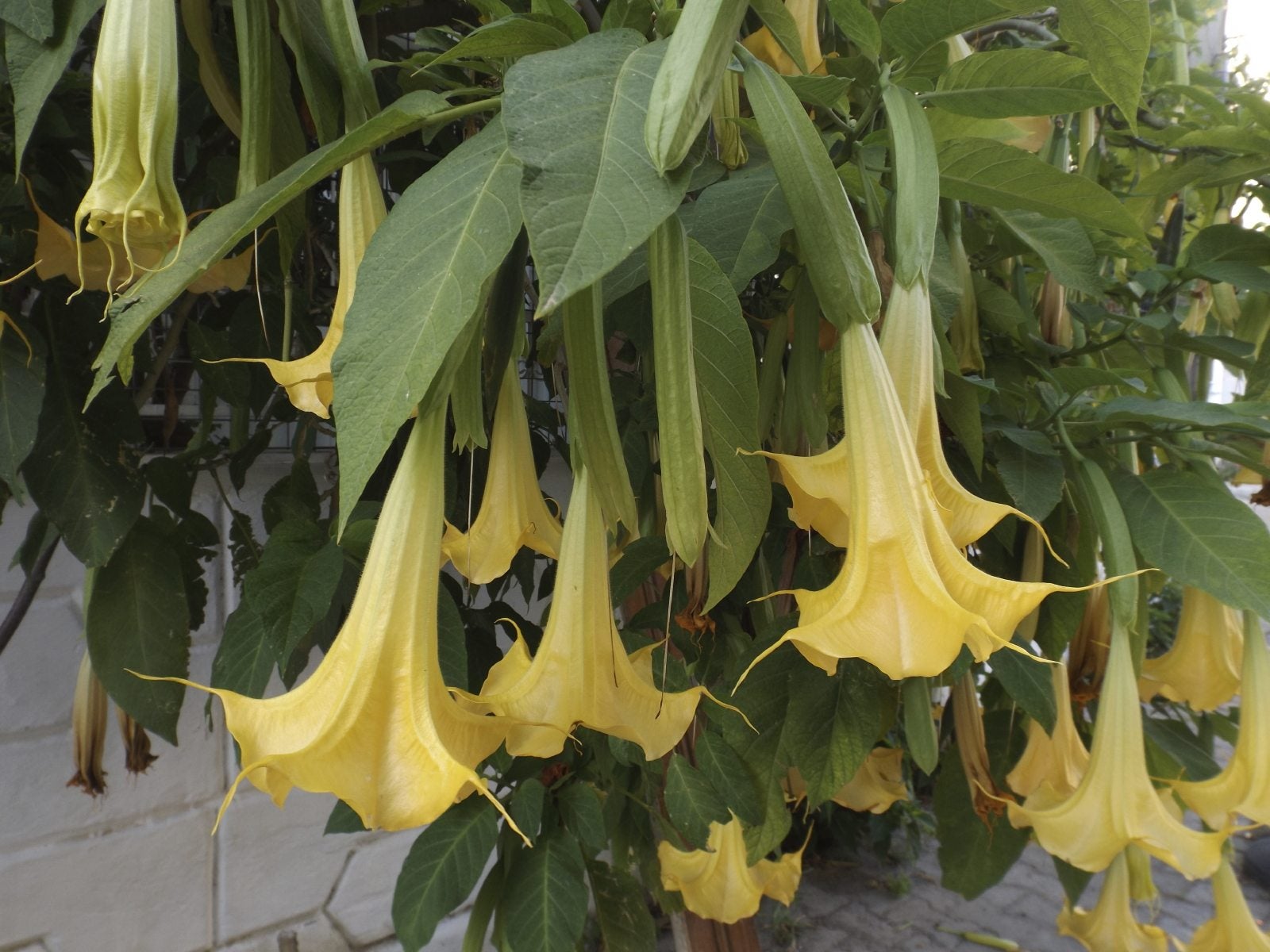 Brugmansia Problems: How To Treat Disease And Pests Of Brugmansia
Brugmansia Problems: How To Treat Disease And Pests Of BrugmansiaAlso known as angel trumpet or simply "brug," brugmansia is a shrubby plant with masses of impressive, trumpet-shaped flowers. While little care is required, pests and diseases may compromise the health and longevity of the plant. Learn more here.
By Mary H. Dyer
-
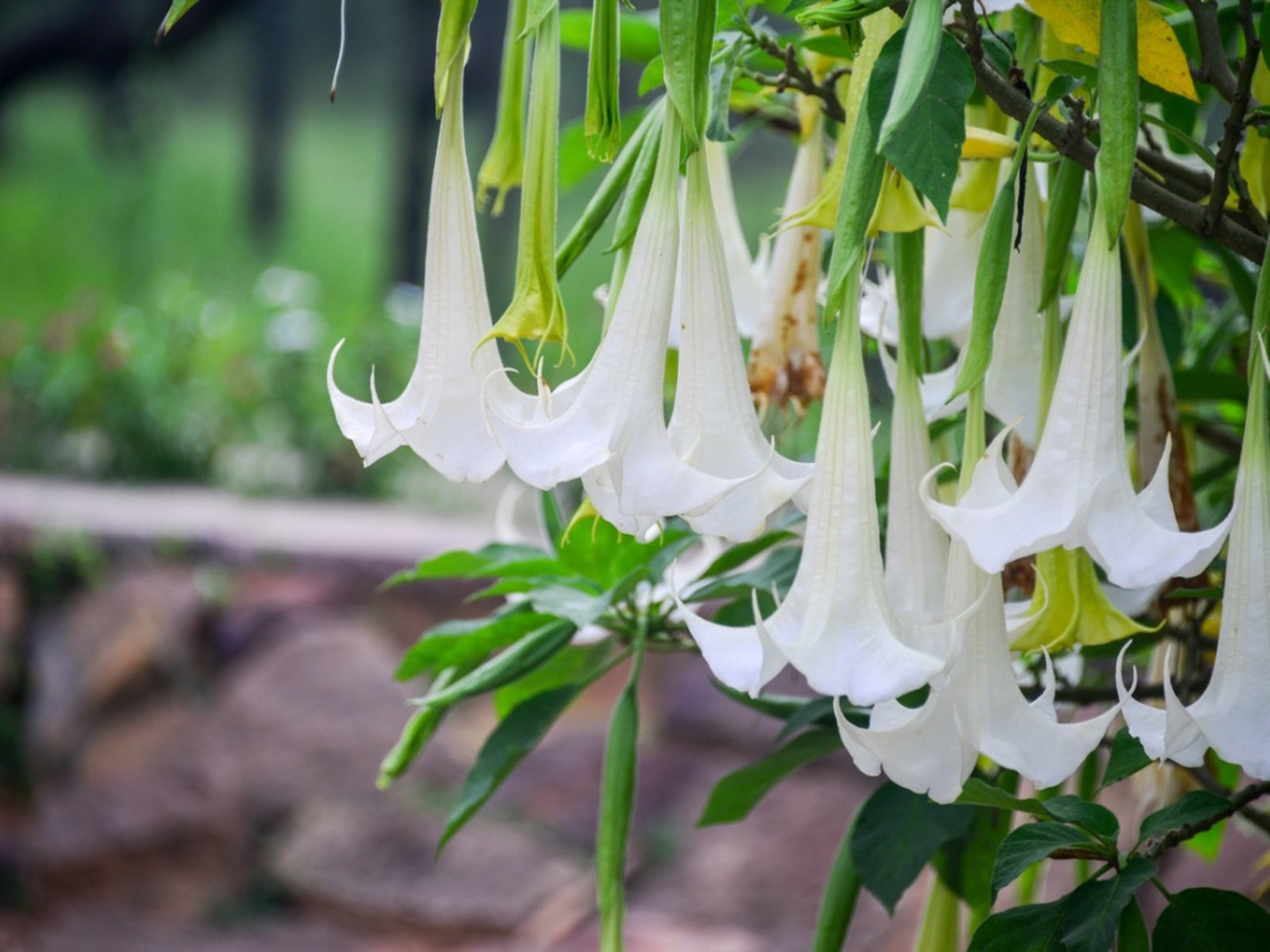 Brugmansia Diseases: Fixing Common Issues With Brugmansia
Brugmansia Diseases: Fixing Common Issues With BrugmansiaIt's never fun to watch a beloved plant fall ill to an unknown disease. Find out more about common brugmansia diseases so you'll be armed and ready should your plant begin to have problems. This article will help.
By Kristi Waterworth
-
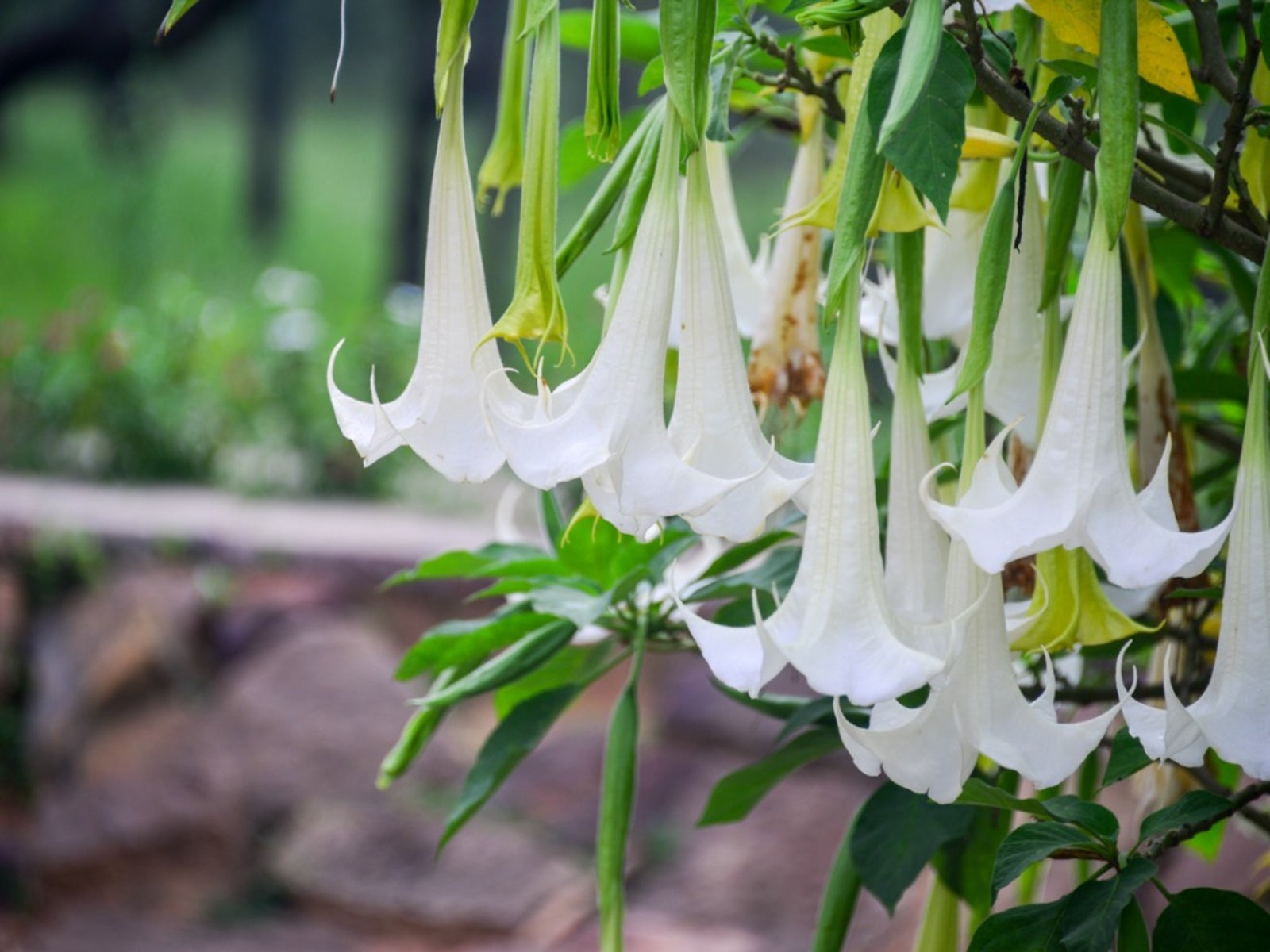 Feeding Angels Trumpet: When And How To Fertilize Brugmansias
Feeding Angels Trumpet: When And How To Fertilize BrugmansiasIf there ever was a flower you just had to grow, brugmansia is it. The plant produces a season long display of trumpet-shaped blooms. Knowing how to fertilize brugmansias will enhance and extend these brilliantly colored flowers. Click here to learn more.
By Bonnie L. Grant
-
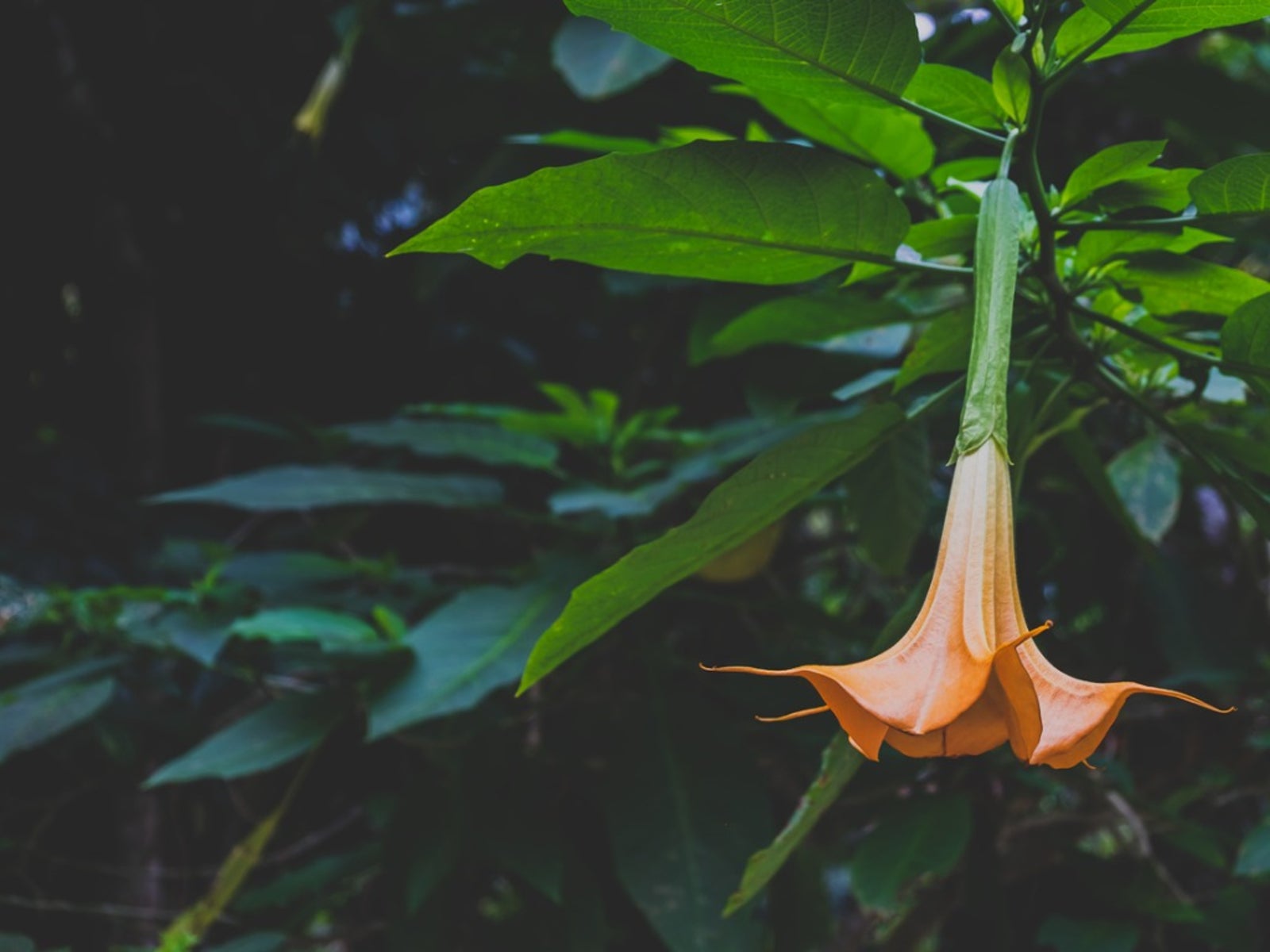 Learn How To Prune Brugmansia Trees
Learn How To Prune Brugmansia TreesBrugmansia plants make attractive specimen plantings. But, in order to keep them looking their best, trimming brugmansia may be necessary. Knowing how to prune brugmansia is important, and this article will help.
By Nikki Tilley
-
 Brugmansia Winter Care - Wintering Brugmansia In Your Home
Brugmansia Winter Care - Wintering Brugmansia In Your HomeWhile most types of brugmansia can thrive outdoors in warm climates, they need to be protected from freezing temps when growing brugmansia in cold climates. Follow the tips here for over-wintering brugmansia.
By Nikki Tilley